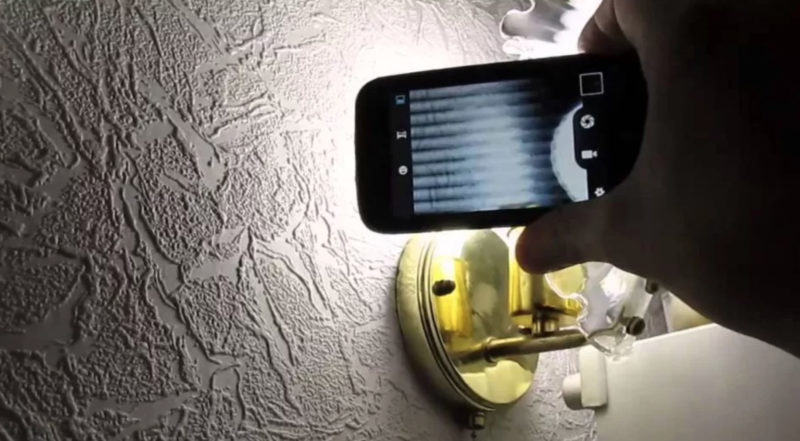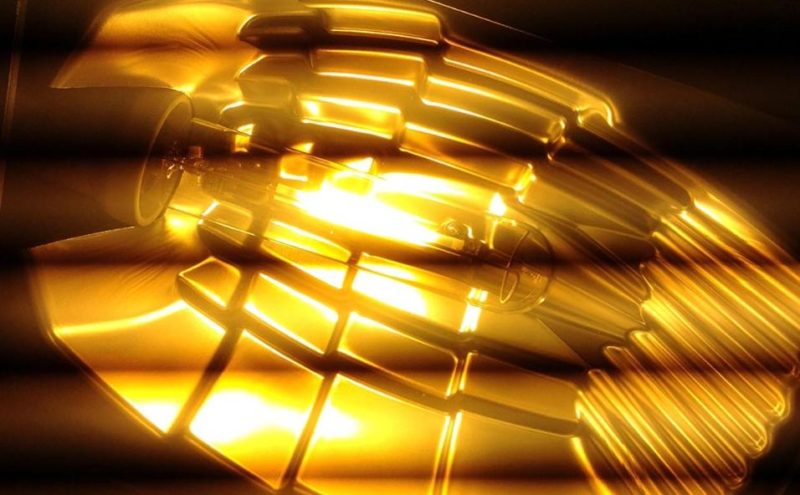What does the light pulsation factor mean
Ripple factor of light - one of the qualitative indicators used in checking the light in the rooms of different purposes. This criterion is not in the ear, but it has a great impact on people, if the norms are violated, fatigue increases and the risk of injury increases in the workplace. That is why it is checked with special equipment to make sure that the light meets the established standards.
What is the luminance pulsation factor
This term refers to the relative depth of fluctuation in the illumination of lamps or luminaires that occurs during the operation of equipment when it is powered by alternating current. In essence, it is a measure of the variation in brightness that is inherent in a particular type of equipment and affects the comfort of the work performed. If you exceed the regulated values, performance is reduced, and the longer the pulsation affects your vision, the greater the fatigue.
The permissible value depends on the type of work being performed and the visual stress required in a particular situation. Most of the standards were established based on the capabilities of the lighting equipment used in the middle of the last century. At that time, the standards were 10, 15 or 20%, some of which are still in use today, while others have become stricter and have changed downward.
In all rooms where computer equipment or displays are used, the luminance ripple factor should not exceed 5%.
The factor in question increases if dimmers are used to control the brightness of the light dimmers. Moreover, the changes are observed only in devices whose operation is based on the principle of pulse-width modulation. The frequency also matters, if it is below 300 Hz, the effect is particularly noticeable.
If the light is supplied by AC power with an industrial frequency of 50 Hz, the pulsation frequency is calculated at twice the value, so it is 100 Hz. It is not possible to determine the pulsation visually in this case. Therefore, special devices - pulse meters - are used for control measurements. Most often it is not a separate device, but universal equipment combined with luxmeter .. In 2012 a number of standards concerning measuring instruments and their verification were introduced, so all devices must comply with the established norms.
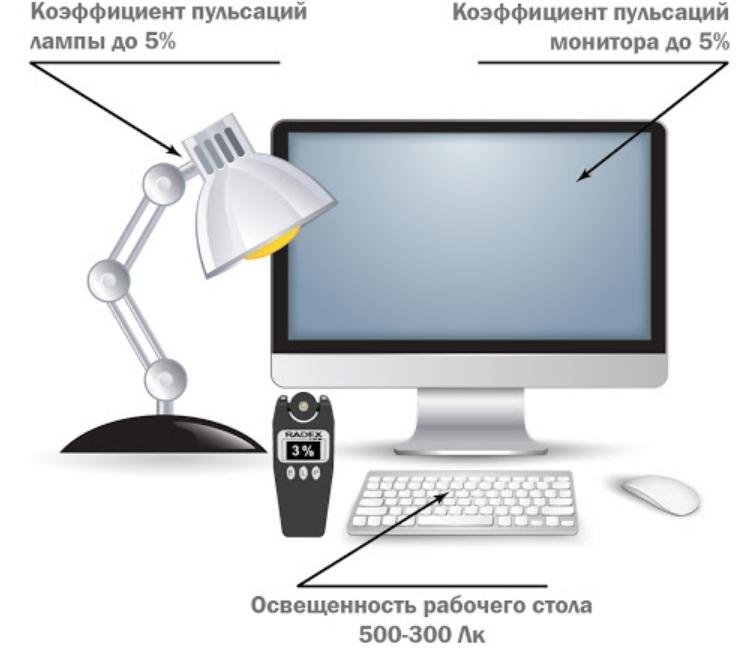
Norms and requirements for the frequency of pulsation
Here it all depends on the type of equipment used and the peculiarities of its connection. It is worth noting that the highest values of light pulsation, greater than 30% are inherent in electromagnetic GEAR и discharge lamps, operating from a single-phase line. Therefore, they are most often used for street lighting and places where you do not need constant visual tension.
By the way! Contrary to popular belief, ripple is also inherent in standard incandescent lamps. When they work from a single-phase power supply, the index can be up to 15%.
Separate attention requires LED equipment. The principle of its operation differs from the standard options, the index depends on the circuitry features of the power supply used in the system. In many cheap products to reduce the cost at the output instead of DC voltage is supplied rectified current with industrial frequency, which leads to the fact that the ripple can reach a mark в 30%.
When Buying LED equipment you should always ask the manufacturer or supplier for technical documentation with all the main indicators, including the ripple of light. Moreover, it is necessary to study the data on each product separately, even if they are similar in characteristics. It often happens that the performance of two almost identical luminaires is very different.
Do not forget that the ripple indicators significantly increase when using dimmers with a frequency of up to 300 Hz in the system. It is better to use variants with values exceeding 400 Hz. It is also worth noting that if the power frequency is more than 5 kHz, the flicker figures are reduced to 1%.
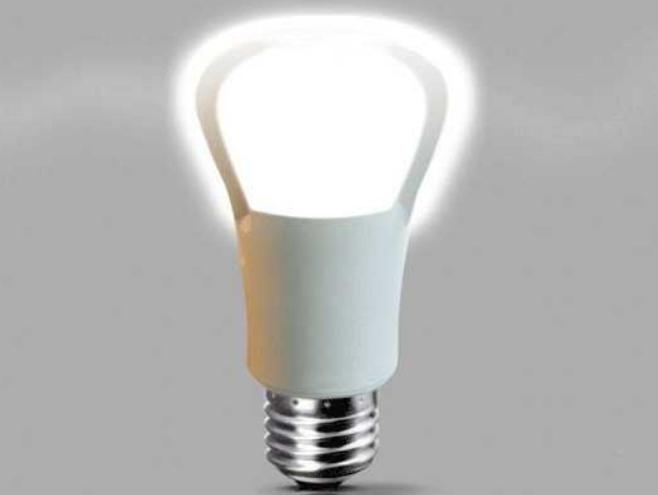
This option works especially well with standard and compact fluorescent equipment. With today's technology, they can be powered at over 25 kHz, allowing for minimal flicker in the light without additional devices.
The rate of light ripple depends on the light source and the number of phases to which the equipment is connected. The basic coefficients for the most common lamps are as follows:
- Incandescent lamps when connected to a single-phase line should provide a flicker factor of 10 to 15%, two-phase - 6 to 8%, three-phase - 1%.
- LB fluorescent lampssingle-phase - 34%, two-phase - 14.4, three-phase - 3%.
- Fluorescent lamps LDconnected to single-phase line - 55%, two-phase - 23,3, three-phase - 5%.
- Mercury arc lamps operating on single-phase voltage should provide a flicker factor of no more than 58%, two-phase - 28%, three-phase - 2%.
- Metal halide light sources when operating on single-phase voltage must meet the standard of a flicker factor of 37%, two-phase - 18%, three-phase - 2%.
- Sodium High-pressure single-phase lamps - 77%, two-phase - 37.7%, three-phase - 9%.
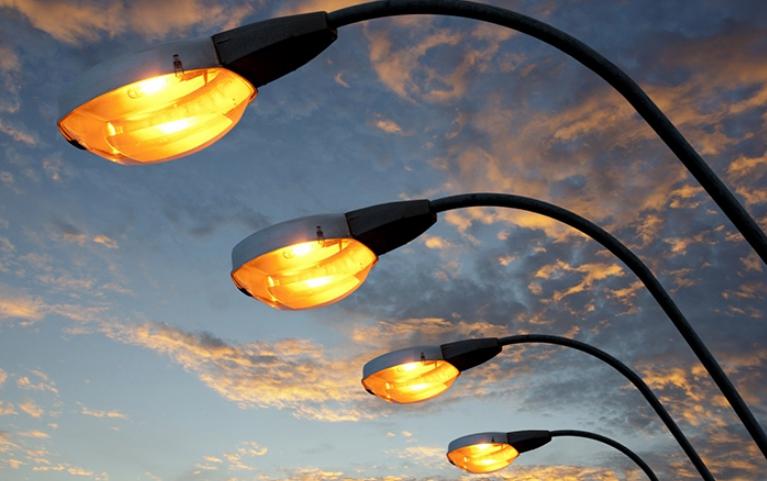
Causes of the stroboscopic effect
The stroboscopic effect is a distortion of the perception of moving or rotating pieces of equipment. It can often be seen on the rotating pulley of a lathe, under certain conditions creating the illusion that it is standing still or turning in the opposite direction. The phenomenon is observed in cases where the frequency of alternating current supplying the fixture is a multiple of the rotation frequency of the equipment or machinery.
This phenomenon is most often observed in production hallsilluminated by fluorescent lamps. In fact, because of the variable power supply it turns out that the period of switching on and off the lamp is superimposed on the periodicity of rotation of the mechanism.
For safety reasons, all production facilities were previously lit with incandescent lamps, as they have a much lower flicker index, which minimized the danger of the stroboscopic effect. In today's environment, LED lights have become the best solution, but only if you use high-quality equipment with power supplies that supply constant current.
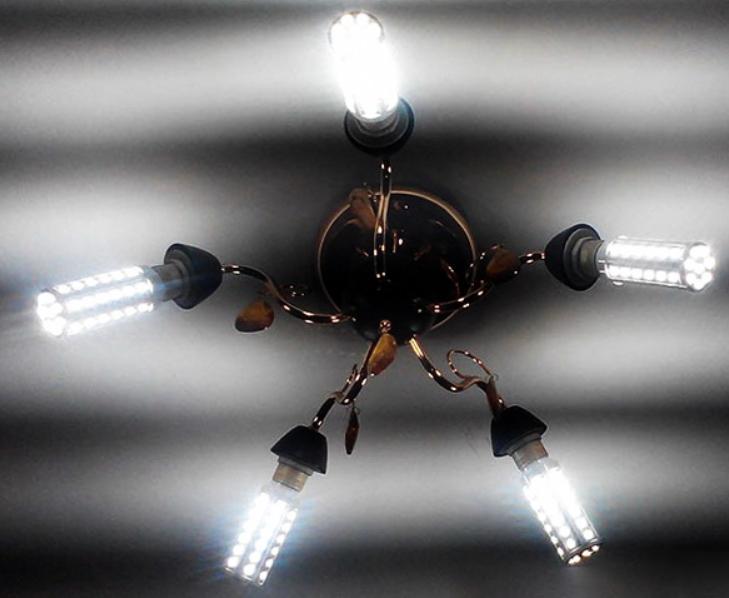
The effect of pulsations on the human body
This phenomenon was noticed quite a long time ago, the most extensive studies were conducted in the middle of the last century. According to the results, any light pulsation with a frequency of up to 300 Hz has a negative impact on the human body.
If you constantly stay in a room with poor-quality light, will change the circadian hormonal rhythm. In addition, if the flicker has a frequency of up to 120 Hz, the human brain reacts to the constant changes and is constantly trying to process incoming information at a subconscious level.
Because of prolonged strain, people get tired much faster and more intensely. Concentration is lost and mental abilities are reduced. It also affects those who are engaged in intellectual work - because of the high load of the brain it is much more difficult to make decisions and conduct research, the efficiency decreases several times.
If the flicker exceeds 300 Hz, it does not affect people in any way and does not overload their brains. It is worth focusing on this indicator when choosing equipment.
How and what to measure the ripple factor
All requirements and regulations regarding light characteristics are laid down in GOST P54945-2012 "Methods for measuring the coefficient of pulsation of illumination". It is this document is guided by the design and control organizations.
The use of measuring devices
All controlling organizations, as well as businesses, use oscilloscopes to determine the coefficient of pulsation. With their help, measurements can be made very quickly and accurately in a room of any size and shape. Previously, the formula shown below was used for calculations.
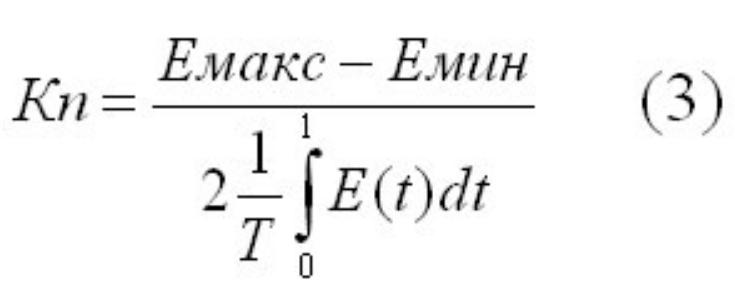
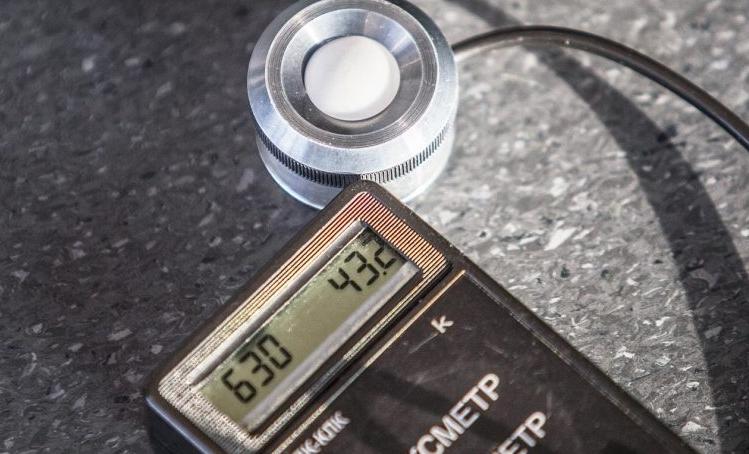
You can also use special programs. In this case, all the necessary data is entered, and then the calculations are made.
For professional use, only verified equipment is suitable, so a certain list of oscilloscopes or universal devices is used. For home, you can buy a simpler model, it will not be perfectly accurate, but will be able to orient on the pulsation rate, this is enough to assess the lighting.
| Facility | Natural light intensity, % | Artificial illuminance, LK | Ripple factor, % |
|---|---|---|---|
| Living rooms (living rooms, bedrooms) | 2 | 150 | - |
| Children's rooms | 4 | 400 | 10 |
| Work rooms (studies, offices) | 3 | 400 | 15 |
| PC operator workplaces | - | 300 | 5 |
| Classrooms, classrooms | 4 | 500 | 10 |
| Salesrooms | 4 | 500 | 10 |
| Roads | - | 2-30 | - |
| Pedestrian areas | - | 1-20 | - |
| Evacuation and emergency lighting | - | 0,1-15 | - |
Folk methods
If you do not have an oscilloscope handy - you can use simple methods that will identify flicker, which is not visible in normal conditions. The most popular ways:
- Smartphone. You turn on the camera and hold it up to the light bulb so that the light source occupies the entire space. If there will be stripes on the image, it means that the ripple factor exceeds the permissible norm.The gadget screen clearly conveys the pulsation of the light bulb.
- Camera. You need to use the device without a flash. A picture of the lamp from a short distance is taken. If it flickers, the stripes will be clearly visible in the photo.The pulsation of the light is clearly visible in the photos.
- Pencil. You need to take it in two fingers, bring it up to the lamp and wave it back and forth for a few seconds. If you observe a "frozen vane" effect with pencil outlines in several places, it means that the lamp is flickering too much. And the clearer the outlines of the stripes, the higher the pulsation coefficient.Stroboscopic effect when checking the light with a pencil.
- Yula. You can simply spin a child's toy directly under the lamp. If there is a stroboscopic effect when spinning it, the light source is better replaced.
Some smartphones have a flicker suppression function, so you can't check for pulsation.
Ways to reduce light pulsation
There can be several ways of solving this. It all depends on the characteristics of the room and the type of devices used, most often use these methods:
- Connecting fixtures to a two- or three-phase line alternately. Due to the shift, the voltage is supplied unevenly and the flicker is reduced.
- When powered by a three-phase line, the number of luminaires should be a multiple of three, two-phase - two.
- Replacement of obsolete equipment with modern LED equipment.
- Using fluorescent lamps with a modern power supply at 5 kHz or higher.
The video discusses the effect of light pulsation on the safety of road users.
Controlling the pulsation of lighting is a must. It affects a person's comfort and fatigue, and in manufacturing facilities, safety depends on it.
